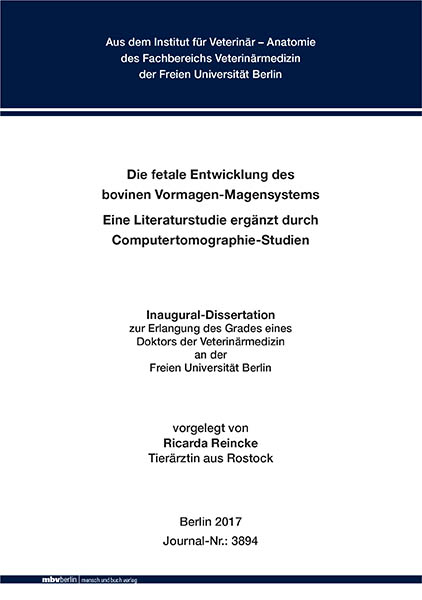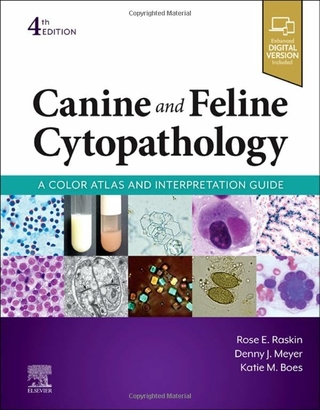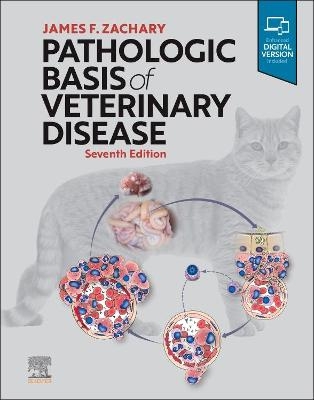
Die fetale Entwicklung des bovinen Vormagen-Magensystems - Eine Literaturstudie ergänzt durch Computertomographie-Studien
Seiten
2017
|
1. Aufl.
Mensch & Buch (Verlag)
978-3-86387-789-7 (ISBN)
Mensch & Buch (Verlag)
978-3-86387-789-7 (ISBN)
- Keine Verlagsinformationen verfügbar
- Artikel merken
The fetal development of the bovine forestomach and stomach system - A literature study complemented by computed tomography studies
During the development of the ruminant stomach complex, pre- and postnatal growth and differentiation processes occur. As a result, a functional unit from the rumen, reticulum, omasum and abomasum is formed, which is a composite multi-chamber stomach. The high losses in the rearing of dairy cattle calves in Germany by diseases of the gastrointestinal tract emphasize the need and the medical interest in gaining additional knowledge on the development of the bovine stomach system. However, information on prenatal morphological development of the ruminant stomach is mainly available from literature that is more than 10 years old.
The aim of this study was to contribute to the understanding of the embryology of the ruminant stomach. For this, an overview of current topical literature of the bovine stomach development was given. In addition to macroscopic and histological aspects, the molecular-biological mechanisms were illustrated. Moreover, for the first time, a morphological study on the development of bovine fetuses was performed and complemented by the use of computer assisted tomography, the latter of, which should be the basis of teaching in embryology.
The investigation of the bovine stomach system was based on whole-body CT scans of 30 fetuses of German Holstein (16 female and 14 male), which were obtained from a slaughterhouse, with a crown-rump length of 9.5 cm to 89 cm. Using appropriate software, the three stomach compartments (ruminoreticulum, omasum and abomasum) were first analyzed for their relative and absolute volume development and their in situ position in craniocaudal extension. As an example, three fetuses of different ages were prepared topographically to validate the CT examinations.
In the evaluation from the 3rd to the beginning of the 9th month of pregnancy the stomach compartments show a chronological growth progress with some characteristics:
- From the 3rd (55% of the total volume) to the 5th (70% of total volume) month of pregnancy, the ruminoreticulum is the largest chamber. At the same time, the abomasum provides the smallest stomach compartment with 21% (3rd month) and 11% of total volume (5th month).
- With the transition to the 6th month of pregnancy, the proportions change. The abomasum increases in portion of the total volume up to the 9th month on 55% (the biggest stomach compartment). However, at the same time, the ruminoreticulum decreases up to 40% of the total volume (second largest stomach compartment).
/ The relative volume development of ruminoreticulum and abomasum is inverse.
- The omasum shows minor changes of its proportions. Up to the transition in the 6th month of pregnancy, it is the second largest stomach compartment (19% of total volume in the 5th month), afterwards, the portion of the total volume decrease up to the 9th month on 5% (smallest stomach compartment).
/ In the last third of gestation, the omasum is already nearly completely developed.
- Based on the factor of volume increase the largest absolute increase in volume happens in the transition from 3rd to 4th month of pregnancy (rumnioreticulum = 30, abomasum = 24, omasum = 20). However, at most, ruminoreticulum and abomasum increased fourfold in volume per month, the omasum only doubled in volume.
- With the transition to the 6th month of pregnancy, the abomasum again shows a growth peak (factor of increase in volume = 17).
/ This growth spurt could represent a critical phase, during which pathological processes can appear.
- The ruminoreticulum is located in the left paramedian region and touched the left abdominal wall. It is the stomach chamber that is stretched most, which in the 4th month of pregnancy reached its maximum length with more than 9.5 vertebrae length. That corresponds to the relations in the adult cattle.
- The omasum is usually located in the intrathoracic part of the abdomen and relatively constant in spherical form in the median region. It is the stomach chamber that is stretched least.
- The location of the abomasum always has an intrathoracic part and is situated close to the right of the adjoining ruminoreticulum and touched the ventral abdominal wall. It is always the second longest stomach chamber, which shows neither a uniform shape nor a consistent position in the abdomen.
/ The change in position of the abomasum to the left abdominal wall in two fetuses in the last third of gestation corresponds the dislocatio abomasi sinistra.
The results indicate a good applicability and reproducibility for measurement and 3-D visualization of the fetal gastrointestinal system from CT image data. Based on the findings of this study, the present knowledge on the prenatal morphologic development of the ruminant stomach are supplement. However, further studies are needed to sufficiently answer the aspects that are still unclear. Die fetale Entwicklung des bovinen Vormagen-Magensystems - Eine Literaturstudie ergänzt durch Computertomographie-Studien
Während der Entwicklung des Wiederkäuermagens kommt es sowohl prä- als auch postnatal zu komplexen Wachstums- und Differenzierungsvorgängen. Im Ergebnis wird eine funktionelle Einheit aus Pansen, Netzmagen, Blättermagen und Labmagen gebildet, welche einen mehrhöhlig zusammengesetzten Magen darstellt. Die hohen Verluste bei der Aufzucht von Milchrindkälbern in Deutschland durch Erkrankungen des Magen-Darmtraktes zeigen den Bedarf und das medizinische Interesse an weiteren Erkenntnissen zur Entwicklung des bovinen Magensystems. Informationen zur pränatalen morphologischen Entwicklung des Wiederkäuermagens gibt es derzeit lediglich aus zum Teil über 10 Jahre alter Literatur.
Ziel dieser Studie war es daher, einen Beitrag zum Verständnis der Embryologie des Wiederkäuermagens zu leisten. Dazu wurde zunächst ein aktueller Überblick zur Literatur der bovinen Magenentwicklung gegeben. Hier wurden neben den makroskopischen und histologischen Aspekten auch die molekularbiologischen Mechanismen weitestgehend beleuchtet. Darüber hinaus wurde erstmals eine computertomographisch unterstützte morphologische Entwicklungsstudie an bovinen Feten durchgeführt, welche als Grundlage für die diesbezügliche Lehre in der Embryologie dienen soll.
Die Untersuchung des bovinen Magensystems erfolgte anhand von Ganzkörper-CTAufnahmen von 30 Feten der Rasse Deutsche Holstein vom Schlachthof (16 weiblich und 14 männlich) mit einer Scheitel-Steißlänge von 9,5 cm bis 89 cm. Mithilfe entsprechender Software wurden die drei Magenabteilungen (Ruminoreticulum, Omasum und Abomasum) erstmals bezüglich ihrer relativen und absoluten Volumenentwicklung sowie ihrer in situ-Lage in kraniokaudaler Ausdehnung untersucht. Zur Validierung der CT-Untersuchungen wurden drei Feten unterschiedlichen Alters exemplarisch topographisch präpariert.
In der Auswertung vom 3. bis zu Beginn des 9. Trächtigkeitsmonats zeigen die Magenabteilungen einen chronologischen Wachstumsfortschritt mit einigen Besonderheiten:
- Das Ruminoreticulum ist vom 3. (55% vom Gesamtvolumen) bis zum 5. Trächtigkeitsmonat (70% vom Gesamtvolumen) die größte Magenabteilung. Zur selben Zeit stellt das Abomasum die kleinste Magenabteilung mit 21% (3. Monat) und 11% vom Gesamtvolumen (5. Monat) dar.
- Mit dem Übergang in den 6. Trächtigkeitsmonat ändern sich die Proportionen. Das Abomasum steigt im Anteil vom Gesamtvolumen bis zum 9. Monat auf 55% (größtes Magenabteilung). Das Ruminoreticulum hingegen sinkt in derselben Zeit bis auf 40% vom Gesamtvolumen.
/ Die relative Volumenentwicklung von Ruminoreticulum und Abomasum ist invers.
- Das Omasum zeigt geringe Proportionsänderungen. Es ist bis zum Übergang in den 6. Trächtigkeitsmonat die zweitgrößte Magenabteilung (19% vom Gesamtvolumen im 5. Monat) anschließend verringert sich der Anteil vom Gesamtvolumen bis zum 9. Monat auf 5%.
/ Das Omasum ist bereits im letzten Drittel der Trächtigkeit nahezu vollständig entwickelt.
- Basierend auf dem Faktor der Volumenzunahme geschieht die größte absolute Volumenzunahme im Übergang vom 3. in den 4. Monat der Trächtigkeit (Ruminoreticulum=30, Abomasum=24, Omasum=20). Darüber hinaus zeigen Ruminoreticulum und Abomasum maximal eine vierfache Volumenzunahme pro Monat, das Omasum lediglich eine Verdopplung.
- Mit dem Übergang in den 6. Trächtigkeitsmonat zeigt das Abomasum nochmals eine Zuwachsspitze (Faktor der Volumenzunahme=17).
/ Dieser Wachstumsschub könnte eine kritische Phase beim Auftreten von pathologischen Prozessen darstellen.
- Das Ruminoreticulum liegt im Abdomen der linken Bauchwand an, ragt nicht über die Medianebene hinaus und ist die am weitesten gestreckte Magenabteilung. Es erreicht im 4. Trächtigkeitsmonat eine maximale Ausdehnung über 9,5 Wirbelkörper, welche den Verhältnissen im adulten Rind entspricht.
- Das Omasum liegt zumeist im intrathorakalen Teil des Abdomen, relativ konstant in kugeliger Form in der Medianebene und ist die am geringsten gestreckte Magenabteilung.
- Das Abomasum hat stets einen intrathorakalen Teil und liegt rechts vom angrenzenden Ruminoreticulum, zumeist der ventralen Bauchwand an. Es ist stets die zweitlängste Magenabteilung, die weder eine einheitliche Gestalt noch eine konstante Lage im Abdomen zeigt.
/ Die Lageveränderung des Abomasums an die linke Bauchwand bei zwei Feten im letzten Drittel der Trächtigkeit entspricht einer Dislocatio abomasi sinistra.
During the development of the ruminant stomach complex, pre- and postnatal growth and differentiation processes occur. As a result, a functional unit from the rumen, reticulum, omasum and abomasum is formed, which is a composite multi-chamber stomach. The high losses in the rearing of dairy cattle calves in Germany by diseases of the gastrointestinal tract emphasize the need and the medical interest in gaining additional knowledge on the development of the bovine stomach system. However, information on prenatal morphological development of the ruminant stomach is mainly available from literature that is more than 10 years old.
The aim of this study was to contribute to the understanding of the embryology of the ruminant stomach. For this, an overview of current topical literature of the bovine stomach development was given. In addition to macroscopic and histological aspects, the molecular-biological mechanisms were illustrated. Moreover, for the first time, a morphological study on the development of bovine fetuses was performed and complemented by the use of computer assisted tomography, the latter of, which should be the basis of teaching in embryology.
The investigation of the bovine stomach system was based on whole-body CT scans of 30 fetuses of German Holstein (16 female and 14 male), which were obtained from a slaughterhouse, with a crown-rump length of 9.5 cm to 89 cm. Using appropriate software, the three stomach compartments (ruminoreticulum, omasum and abomasum) were first analyzed for their relative and absolute volume development and their in situ position in craniocaudal extension. As an example, three fetuses of different ages were prepared topographically to validate the CT examinations.
In the evaluation from the 3rd to the beginning of the 9th month of pregnancy the stomach compartments show a chronological growth progress with some characteristics:
- From the 3rd (55% of the total volume) to the 5th (70% of total volume) month of pregnancy, the ruminoreticulum is the largest chamber. At the same time, the abomasum provides the smallest stomach compartment with 21% (3rd month) and 11% of total volume (5th month).
- With the transition to the 6th month of pregnancy, the proportions change. The abomasum increases in portion of the total volume up to the 9th month on 55% (the biggest stomach compartment). However, at the same time, the ruminoreticulum decreases up to 40% of the total volume (second largest stomach compartment).
/ The relative volume development of ruminoreticulum and abomasum is inverse.
- The omasum shows minor changes of its proportions. Up to the transition in the 6th month of pregnancy, it is the second largest stomach compartment (19% of total volume in the 5th month), afterwards, the portion of the total volume decrease up to the 9th month on 5% (smallest stomach compartment).
/ In the last third of gestation, the omasum is already nearly completely developed.
- Based on the factor of volume increase the largest absolute increase in volume happens in the transition from 3rd to 4th month of pregnancy (rumnioreticulum = 30, abomasum = 24, omasum = 20). However, at most, ruminoreticulum and abomasum increased fourfold in volume per month, the omasum only doubled in volume.
- With the transition to the 6th month of pregnancy, the abomasum again shows a growth peak (factor of increase in volume = 17).
/ This growth spurt could represent a critical phase, during which pathological processes can appear.
- The ruminoreticulum is located in the left paramedian region and touched the left abdominal wall. It is the stomach chamber that is stretched most, which in the 4th month of pregnancy reached its maximum length with more than 9.5 vertebrae length. That corresponds to the relations in the adult cattle.
- The omasum is usually located in the intrathoracic part of the abdomen and relatively constant in spherical form in the median region. It is the stomach chamber that is stretched least.
- The location of the abomasum always has an intrathoracic part and is situated close to the right of the adjoining ruminoreticulum and touched the ventral abdominal wall. It is always the second longest stomach chamber, which shows neither a uniform shape nor a consistent position in the abdomen.
/ The change in position of the abomasum to the left abdominal wall in two fetuses in the last third of gestation corresponds the dislocatio abomasi sinistra.
The results indicate a good applicability and reproducibility for measurement and 3-D visualization of the fetal gastrointestinal system from CT image data. Based on the findings of this study, the present knowledge on the prenatal morphologic development of the ruminant stomach are supplement. However, further studies are needed to sufficiently answer the aspects that are still unclear. Die fetale Entwicklung des bovinen Vormagen-Magensystems - Eine Literaturstudie ergänzt durch Computertomographie-Studien
Während der Entwicklung des Wiederkäuermagens kommt es sowohl prä- als auch postnatal zu komplexen Wachstums- und Differenzierungsvorgängen. Im Ergebnis wird eine funktionelle Einheit aus Pansen, Netzmagen, Blättermagen und Labmagen gebildet, welche einen mehrhöhlig zusammengesetzten Magen darstellt. Die hohen Verluste bei der Aufzucht von Milchrindkälbern in Deutschland durch Erkrankungen des Magen-Darmtraktes zeigen den Bedarf und das medizinische Interesse an weiteren Erkenntnissen zur Entwicklung des bovinen Magensystems. Informationen zur pränatalen morphologischen Entwicklung des Wiederkäuermagens gibt es derzeit lediglich aus zum Teil über 10 Jahre alter Literatur.
Ziel dieser Studie war es daher, einen Beitrag zum Verständnis der Embryologie des Wiederkäuermagens zu leisten. Dazu wurde zunächst ein aktueller Überblick zur Literatur der bovinen Magenentwicklung gegeben. Hier wurden neben den makroskopischen und histologischen Aspekten auch die molekularbiologischen Mechanismen weitestgehend beleuchtet. Darüber hinaus wurde erstmals eine computertomographisch unterstützte morphologische Entwicklungsstudie an bovinen Feten durchgeführt, welche als Grundlage für die diesbezügliche Lehre in der Embryologie dienen soll.
Die Untersuchung des bovinen Magensystems erfolgte anhand von Ganzkörper-CTAufnahmen von 30 Feten der Rasse Deutsche Holstein vom Schlachthof (16 weiblich und 14 männlich) mit einer Scheitel-Steißlänge von 9,5 cm bis 89 cm. Mithilfe entsprechender Software wurden die drei Magenabteilungen (Ruminoreticulum, Omasum und Abomasum) erstmals bezüglich ihrer relativen und absoluten Volumenentwicklung sowie ihrer in situ-Lage in kraniokaudaler Ausdehnung untersucht. Zur Validierung der CT-Untersuchungen wurden drei Feten unterschiedlichen Alters exemplarisch topographisch präpariert.
In der Auswertung vom 3. bis zu Beginn des 9. Trächtigkeitsmonats zeigen die Magenabteilungen einen chronologischen Wachstumsfortschritt mit einigen Besonderheiten:
- Das Ruminoreticulum ist vom 3. (55% vom Gesamtvolumen) bis zum 5. Trächtigkeitsmonat (70% vom Gesamtvolumen) die größte Magenabteilung. Zur selben Zeit stellt das Abomasum die kleinste Magenabteilung mit 21% (3. Monat) und 11% vom Gesamtvolumen (5. Monat) dar.
- Mit dem Übergang in den 6. Trächtigkeitsmonat ändern sich die Proportionen. Das Abomasum steigt im Anteil vom Gesamtvolumen bis zum 9. Monat auf 55% (größtes Magenabteilung). Das Ruminoreticulum hingegen sinkt in derselben Zeit bis auf 40% vom Gesamtvolumen.
/ Die relative Volumenentwicklung von Ruminoreticulum und Abomasum ist invers.
- Das Omasum zeigt geringe Proportionsänderungen. Es ist bis zum Übergang in den 6. Trächtigkeitsmonat die zweitgrößte Magenabteilung (19% vom Gesamtvolumen im 5. Monat) anschließend verringert sich der Anteil vom Gesamtvolumen bis zum 9. Monat auf 5%.
/ Das Omasum ist bereits im letzten Drittel der Trächtigkeit nahezu vollständig entwickelt.
- Basierend auf dem Faktor der Volumenzunahme geschieht die größte absolute Volumenzunahme im Übergang vom 3. in den 4. Monat der Trächtigkeit (Ruminoreticulum=30, Abomasum=24, Omasum=20). Darüber hinaus zeigen Ruminoreticulum und Abomasum maximal eine vierfache Volumenzunahme pro Monat, das Omasum lediglich eine Verdopplung.
- Mit dem Übergang in den 6. Trächtigkeitsmonat zeigt das Abomasum nochmals eine Zuwachsspitze (Faktor der Volumenzunahme=17).
/ Dieser Wachstumsschub könnte eine kritische Phase beim Auftreten von pathologischen Prozessen darstellen.
- Das Ruminoreticulum liegt im Abdomen der linken Bauchwand an, ragt nicht über die Medianebene hinaus und ist die am weitesten gestreckte Magenabteilung. Es erreicht im 4. Trächtigkeitsmonat eine maximale Ausdehnung über 9,5 Wirbelkörper, welche den Verhältnissen im adulten Rind entspricht.
- Das Omasum liegt zumeist im intrathorakalen Teil des Abdomen, relativ konstant in kugeliger Form in der Medianebene und ist die am geringsten gestreckte Magenabteilung.
- Das Abomasum hat stets einen intrathorakalen Teil und liegt rechts vom angrenzenden Ruminoreticulum, zumeist der ventralen Bauchwand an. Es ist stets die zweitlängste Magenabteilung, die weder eine einheitliche Gestalt noch eine konstante Lage im Abdomen zeigt.
/ Die Lageveränderung des Abomasums an die linke Bauchwand bei zwei Feten im letzten Drittel der Trächtigkeit entspricht einer Dislocatio abomasi sinistra.
| Erscheinungsdatum | 02.10.2018 |
|---|---|
| Verlagsort | Berlin |
| Sprache | deutsch |
| Maße | 148 x 210 mm |
| Themenwelt | Veterinärmedizin ► Vorklinik |
| Schlagworte | abomasum • cattle • Computed tomography • Fetal development • fetal growth • omasum • Pregnancy • Reticulum |
| ISBN-10 | 3-86387-789-6 / 3863877896 |
| ISBN-13 | 978-3-86387-789-7 / 9783863877897 |
| Zustand | Neuware |
| Informationen gemäß Produktsicherheitsverordnung (GPSR) | |
| Haben Sie eine Frage zum Produkt? |
Mehr entdecken
aus dem Bereich
aus dem Bereich
A Color Atlas and Interpretation Guide
Buch | Hardcover (2022)
Saunders (Verlag)
CHF 229,95

